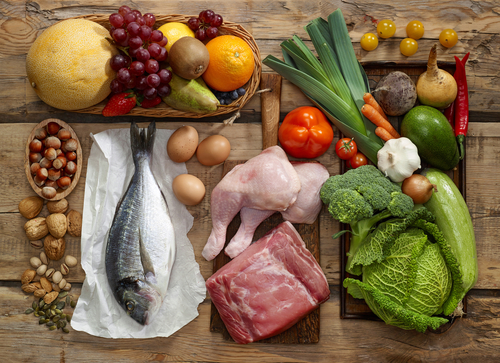How To Prevent DOMS – The Best Ways To Recover After Your Workouts
Hobbling around the next day after blasting your legs on the hack squat is not a pleasant feeling. You may feel good in the sense that you’ve annihilated your leg muscles, but walking up a flight of stairs isn’t a pretty sight.
Now don’t get me wrong DOMS, aka Delayed Onset Muscle Soreness, is entirely normal. When you lift weights, especially when doing a bodybuilding style of training, where you control the rep’s eccentric part and focus on tension, it will create muscle soreness.
While muscle soreness isn’t bad, if you are sore for more than 1-2 days, it’s not a good thing, and it will severely limit how frequently you can train, your intensity will suffer, and you will miss out on some serious muscle/performance gains.
In this article, I’m going to tell you ways to reduce DOMS so that you can speed up your recovery and boost your training performance.
1. Nutrition
When lifting weights, it’s important to eat rich and nutritious foods. Foods that help you recover. A perfect mix of protein, carbs, and fats. Nick Screetoni, a fitness trainer at LEP fitness, says, “As a general rule of thumb, you want to focus on eating single-ingredient foods, foods that contain no other ingredients.” For example:
- Chicken
- Eggs
- Steak
- Mince
- Apple
- Banana
- Strawberries
- Grapes
- Broccoli
- Lettuce
- Peas
- Nuts
Or all meat, fish, vegetables, and fruit.
If you are hitting the weights 3+ times per week, it’s also imperative to consume plenty of protein. For most guys, this means over 160g of protein per day. Ideally, you want to spread your protein out over four meals, with at least a 3-hour gap between meals. For example:
- Meal 1 (7am) – 40g protein (2-3 large eggs and 2 rashers of bacon)
- Meal 2 (11am) – 40g protein (50g whey protein shake)
- Meal 3 (2pm) – 40g protein (200g chicken)
- Meal 4 (6pm) – 40g protein (200g steak)
The above is just an example. You should also add carbohydrates into your meals, especially around your workouts i.e., pre-workout and post-workout meal. Good carbs to use are foods such as:
- Potatoes (all kinds)
- Rice
- Couscous
- Grains
Alongside the protein and carbs, make sure to consume plenty of colourful vegetables, such as:
- Peppers (red, green, yellow)
- Onions
- Courgette
- Spinach
- Mushrooms
- Cauliflower

2. Rest
Have you heard the saying, “you don’t grow in the gym”? It’s true. While you stimulate change in the gym, the growth comes with good nutrition and adequate rest and recovery.
One of the best ways to speed up recovery and mitigate DOMS is to focus on nutrition (see the previous point), but equally important is to ensure you are getting 8 hours of sleep every night.
To get 8 hours of sleep, I recommend creating a sleep routine, where you go to bed every night at the same time, and wake up at the same time each day, e.g.:
Wake up – 7am
Go to bed – 10pm
Try and stick to your sleep routine seven days per week.
As well as the above, avoid anything that stimulates too much brain activity at night, such as watching TV and going on your phone. If you can, try and take away all of these light stimulants at least one hour before bed (ideally two hours if you can). Sleep is essential, and the better you sleep, the quicker your muscles will recover. You can also take ZMA before bed, a sleep supplement used by many bodybuilders.

3. Soft Tissue Massage
The harder you train, the more frequently you will benefit from a soft tissue massage. Something like a sports massage will help you recover and realign your body after beating it up in the weights room.
I would recommend booking a massage therapist in your area and finding someone you trust who knows their stuff (there are many people out there who will do more harm than good). I would recommend asking for a referral from a friend or someone you trust like a personal trainer in your gym or your fitness buddy, who’s a bodybuilder.
4. Foam Rolling
Have you seen people in your gym foam rolling? If not, quickly, Google ‘foam roller’ and you will have likely seen somebody using one. If used correctly, they are an excellent tool for reducing muscle tightness and improving circulation/blood flow. Foam rolling promotes faster recovery, helping to repair your damaged muscles.
Foam rollers can be used pre-training, during training, and post-training. To prevent DOMS, I would recommend:
- 5 minutes pre-training
- 10-20 minutes post-training
Roll out the specific muscles you’re targeting. The aim is to release any knots and remove lactic acid to help your body recover quicker.
Typical areas of the body that get super tight and are therefore worth foam rolling on are:
- Front shoulders
- Glutes
- Hamstrings
- Upper, mid, and lower back
- Calves
Spending 1-2 minutes on each muscle group will help prevent tightness/soreness.
5. Stretching
There are mixed messages on stretching, some people swear by it, others say it’s useless. But my standpoint on stretching is that it can be beneficial, mostly when done at the end of your training session.
For example, once you’ve finished your weights session, I would recommend doing some foam rolling and then finishing off with some static stretches, holding each stretch for 90-120s.
I’m a big fan of doing the Jefferson curl and hurdle stretch for the hamstrings and hips.
Another good stretch to do after completing a push session (chest, shoulders, and triceps) is to lie flat on a bench, with some 2-4kg dumbbells, then get into a chest fly position, hold the stretched position for 90-120s. The fly stretch is a great way to relax and lengthen the chest. Arnold Schwarzenegger did a similar thing to stretch to expand his rib cage – although he did a dumbbell pullover instead. Both stretches are highly effective.